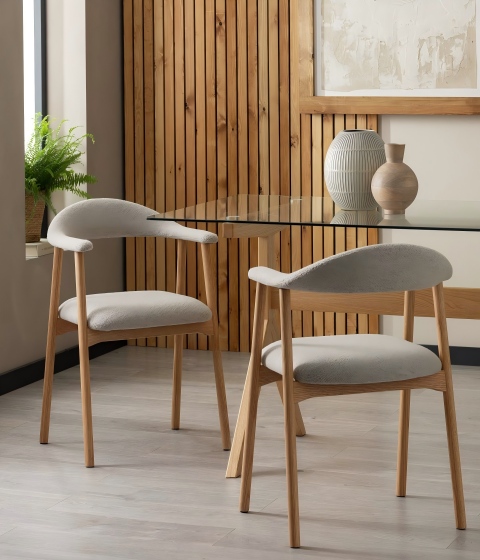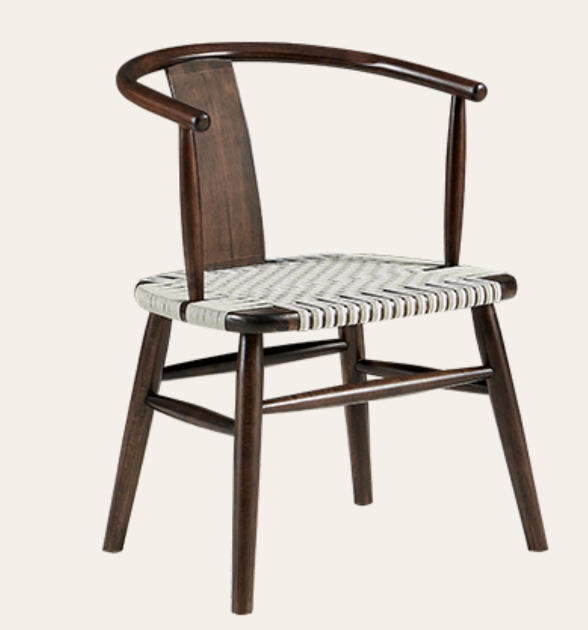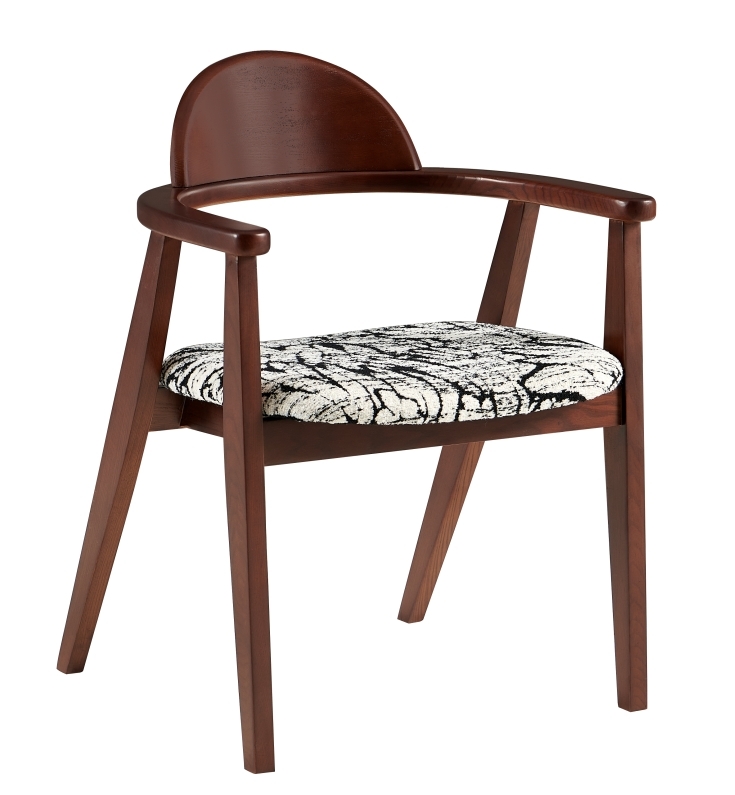A Buyer’s Guide: How to Ask Chinese Suppliers About Solid Wood Chairs More Effectively at Furniture Fairs

Furniture fairs are a wild, bustling scene. Imagine hundreds of booths packed with samples, suppliers tossing out pitches, and buyers scrambling to find the perfect pieces. It’s a lot. For international buyers chasing high-quality solid wood chairs, talking to Chinese suppliers in this frenzy can feel like searching for a diamond in a haystack. Language barriers and tight schedules don’t help. You need a clear plan to ask the right questions, build trust, and lock in deals that work for you. This guide is your playbook. Whether you’re a retailer, wholesaler, or sourcing for hotels, these tips will help you navigate the chaos and make every conversation pop.
Why Solid Wood Chairs Are a Smart Choice
Solid wood chairs are a buyer’s dream. They’re tough, timeless, and bring a cozy, natural vibe to dining spaces. Unlike MDF or metal, solid wood has grain patterns that scream craftsmanship. Take chairs like the Neo 9024019 or Venn 9024018, crafted from premium ash or oak. They’re not just seats. They’re pieces that age like fine wine, picking up a warm patina over time. That’s why they’re worth the investment.
Here’s the thing, though: not all solid wood chairs are built the same. Wood quality, construction, and finishes can vary big time. At furniture fairs, suppliers show off everything from budget to high-end. You’ve got to know how to spot the real deal. Let’s dive into how to approach Chinese suppliers like a pro and get the answers you need.
Preparing Before the Fair
Showing up to a furniture fair without prep is like walking into a poker game blindfolded. You might get lucky, but don’t count on it. Here’s how to gear up:
Scope Out Market Trends: Know what’s selling in your region. Light wood chairs like the Jora 9024023 are all the rage in Europe for their clean, Scandinavian look. Darker finishes, like the Venn 9024018, vibe with North American buyers who dig industrial styles. Browse Pinterest or Houzz to catch the latest design waves.
Lock In Your Specs: Solid wood chairs come in different woods—oak, ash, walnut—and sizes. Be clear on what you need. Think seat height (45-50 cm is standard) or weight capacity (120-150 kg for commercial use). Jot it down to stay on track.
Learn a Few Mandarin Words: A little language goes far. Try saying “shí mù yǐ zi” (solid wood chair) or “zhì liàng” (quality). It’s a small move, but suppliers notice. It sets a friendly vibe right off the bat.
I once saw a guy at a fair scribbling specs on a napkin because he didn’t prep. Total mess. Don’t wing it. A bit of prep makes you look sharp and saves time.
Questions to Ask Chinese Suppliers About Solid Wood Chairs

At a fair, time’s short. Suppliers are swamped, juggling buyers left and right. You need questions that cut through the fluff and dig up details you won’t find in glossy brochures. Here’s what to ask, why it matters, and how to say it without wasting a second.
1. Wood Type and Sourcing
The wood is the soul of a solid wood chair. Ask these:
“What wood is this chair made of? Is it solid all the way, or mixed with something like MDF?”
“Where’s the wood from? Is it sustainably sourced?”
Why It Matters: Chairs like the Neo 9024019 use solid ash for durability. Cheaper ones might sneak in MDF to cut corners. Sustainable sourcing, like FSC-certified wood, is a big win for eco-conscious markets. A 2023 industry report noted 70% of EU buyers want furniture that’s kind to the planet. That’s a selling point you can’t skip.
Pro Tip: Pick up the chair. Solid wood has some heft. If it feels like a feather, ask about the core material. Something’s probably off.
2. Construction and Craftsmanship
How a chair’s put together decides if it’ll last. Try these questions:
“What kind of joinery do you use? Glue, dowels, or mortise-and-tenon?”
“Can you tell me about your assembly process?”
Why It Matters: Top-tier chairs like the Lara 9024051 use mortise-and-tenon joints. They’re rock-solid. Budget models might lean on glue alone, which can give out fast. Knowing the process helps you judge if the chair can handle heavy use, like in a busy hotel dining room.
Pro Tip: Flip the chair over. Check the joints. Clean, tight connections mean good work. Spotty glue or staples? Walk away.
3. Finishes and Maintenance
Finishes change how a chair looks and how much work it takes to keep it nice. Ask:
“What’s the finish on this chair? Does it resist scratches or stains?”
“How do I take care of it to make it last?”
Why It Matters: Chairs like the Venn 9024018 have eco-friendly lacquer that laughs off spills. That’s great for families or restaurants. In humid spots like Southeast Asia, you need chairs that won’t warp. The Lior 5015004’s MDF option is built for that. Finishes are key for keeping customers happy long-term.
Pro Tip: Ask for a finish sample or a care guide. Suppliers who answer clearly usually have their quality game tight.
4. Customization and MOQ
You want chairs that fit your market’s style. Ask:
“Can I tweak the wood stain or upholstery? What are my options?”
“What’s the minimum order quantity for this chair?”
Why It Matters: Chairs like the Naya 9024044 let you pick fabrics, like linen or PU leather, to match different vibes. MOQs for solid wood chairs typically run 50-200 units. But good suppliers might flex for bigger orders. Customization helps your products stand out.
Pro Tip: Testing a new market? Ask about sample orders. Some suppliers will sell single units for a bit more cash.
5. Production Capacity and Lead Times
Timing can screw up your supply chain if you’re not careful. Ask:
“How many chairs can you make a month for this model?”
“How long from order to shipment?”
Why It Matters: Big players with factories in northern China can crank out 5,000 chairs a month. Smaller outfits might struggle with large orders. Lead times usually hit 30-60 days. But peak seasons, like after Chinese New Year, can stretch things out. You need to know what you’re in for.
Pro Tip: Clarify if the lead time includes shipping. A “45-day” quote might just mean production, not delivery to your dock.
Here’s a quick table to keep your questions straight:
|
Question Category |
Sample Question |
Why It Matters |
|
Wood Type |
“Is this solid ash or mixed with MDF?” |
Confirms you’re getting real quality |
|
Craftsmanship |
“Are the joints mortise-and-tenon?” |
Shows if the chair’s built to last |
|
Finishes |
“Does the finish resist scratches?” |
Impacts upkeep and customer satisfaction |
|
Customization |
“Can I pick a different fabric color?” |
Helps you tailor to your market |
|
Production |
“How many chairs can you make monthly?” |
Ensures they can handle your order size |
Building Rapport with Suppliers
Fairs aren’t just about chairs. They’re about people. Chinese suppliers value trust and long-term partnerships. Here’s how to make a connection:
Keep It Friendly but Focused: Start with a smile and a clear line, like, “I’m looking for solid wood chairs for my dining line.” It shows you’re serious without dragging things out.
Use Pictures or Sketches: Got a specific design in mind? Bring visuals. If you love the curved backrest on the Naya 9024044, show a similar style to get your point across fast.
Stay in Touch After the Fair: Grab their WeChat or email. A quick note like, “Really liked the Neo 9024019—can we talk specs?” keeps the conversation going.
I’ve seen buyers tank deals by diving into price cuts too soon. Big mistake. Build a connection first. It makes haggling way smoother later.
Common Pitfalls to Avoid
Even seasoned buyers trip up at fairs. Here’s what to dodge:
Obsessing Over Price: A $30 chair might sound like a steal, but cheap wood often cracks in a year. Quality costs more, but it saves you from angry customers.
Forgetting Certifications: Ask for quality certifications, like ISO 9001, or load-bearing test reports. Without them, chairs might not hold up in busy settings like restaurants.
Skipping Factory Details: Check if the supplier runs their own factory, like those in northern China, or if they outsource. Direct manufacturers keep quality tighter.
A buyer I know once ordered 200 chairs without checking certifications. Half arrived wobbly. Total disaster. Don’t let that be your story.
About FOREST: Your Trusted Solid Wood Chair Supplier

FOREST, based out of Tianjin, is a big name in solid wood chairs. Their factories, dotted across northern China, pump out top-notch pieces like the Neo 9024019 (solid ash with a woven look) and the Lara 9024051 (ash with comfy upholstery). They’re big on sustainable sourcing and solid craftsmanship, which makes them a favorite for retailers, wholesalers, and hospitality folks worldwide. Need light wood chairs for a Scandinavian feel? Or dark, bold ones for an industrial edge? FOREST has options and can customize to fit your vibe. They’re all about quality and dependability, which keeps buyers coming back.
Conclusion
Furniture fairs can feel like a sprint through a storm, but they’re a treasure trove for sourcing solid wood chairs from Chinese suppliers. Go in prepared, ask sharp questions, and build relationships. That’s how you find chairs that click with your market. From checking wood types to sorting out MOQs, every move gets you closer to a killer deal. FOREST shines with their durable, stylish chairs, but these tips work for any supplier. Head to your next fair with a plan, and turn quick chats into partnerships that stick.
FAQs
How do I start a chat about solid wood chairs at a furniture fair?
Walk up with a grin and get straight to it. Try, “I’m looking for solid wood chairs for dining rooms—got any ash or oak options?” It shows you’re serious and keeps things moving.
How can I tell if solid wood chairs are high quality?
Check the wood—solid ash or oak is top-tier. Look at the joints; mortise-and-tenon is a good sign. Ask for certifications or test reports. Also, lift the chair. If it’s too light, it might not be fully solid.
Can I negotiate prices for solid wood chairs at fairs?
Yeah, but don’t jump in too fast. Talk specs and MOQs first. Once you’ve got a connection, suppliers are more open to price tweaks. It’s all about building trust.
What if I need custom solid wood chairs for my market?
Ask about options like wood stains or fabrics. The Venn 9024018, for example, offers leather color choices. Check MOQs for custom orders to avoid surprises.
How long does it take to get solid wood chairs after ordering at a fair?
Usually 30-60 days for production. Shipping adds more time. Ask if the lead time includes delivery, and watch for delays after busy seasons like Chinese New Year.

